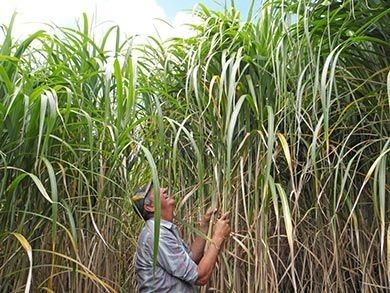The Business
Background
What is Miscanthus? The sterile Miscanthus hybrid that is being grown in New Zealand is Miscanthus x giganteus – simply known as MxG or just Miscanthus. It is a plant that is being grown increasingly throughout the world as a purpose-grown bioenergy crop. It is a naturally occurring hybrid between M. sinensis and M. sacchariflorus which is indigenous to Japan. Because it is sterile it has to be propagated vegetatively.

Because MxG has to be reproduced vegetatively, and because it is becoming sought-after for an increasingly wide variety of uses, there is an international shortage of plants.
Miscanthus New Zealand Limited (MNZ) imported its own MxG plants from the UK in 2010, and has been multiplying them since then as quickly as is biologically and financially possible. There were sufficient plants for trials to be established in 2010, with initial establishment at semi-commercial scale commencing in the spring / summer of 2011. Numbers have been built rapidly with further planting in subsequent years.
Markets
Land Requirements
The main characteristic required of the land on which Miscanthus is going to be grown is that the terrain is suitable to allow harvesting machinery to traverse it. To some extent this depends on the type of harvesting machinery that will be used because machinery that requires a truck or truck and trailer to travel alongside the harvester can only be used on quite gentle slopes.

That aside, there is no requirement for high fertility and Miscanthus does handle most soils quite well apart from very heavy clay soils. However given the choice, Miscanthus performs much better on deep free draining soils because it can get its roots down as deep as 2 metres which makes it much more resilient in terms of drought tolerance, particularly if there is water table within reach of those roots.
The most important site characteristic is rainfall that needs to be greater than 600 mm per year.
Dry matter production of Miscanthus once it is established properly is almost directly equivalent to the rainfall because Miscanthus loves plenty of water, particularly if it is a free draining soil.
When it comes to temperature, Miscanthus relishes warm weather during the growing season but tolerates extremely cold weather during the winter – growing successfully in southern Sweden and Denmark – places where it gets so cold that the sea freezes over in winter.
MNZ experience is that Miscanthus does not like subzero air temperatures once it has started growing actively and this can cause it to be killed back to the rhizome so that it has to start growing again from the base. However, such cold does not kill the Miscanthus plant itself.
Weed control is the other most important factor and in the first year excellent weed control is essential in order to get establishment and initial production satisfactory. There are numerous weed control measures that can be taken for most weeds, but grass weeds are the hardest because selective herbicides tend to be less common. Once Miscanthus has been well established in the first year with good weed control and has started active growth in the second year, it tends to outgrow any weeds that may be present. Any weeds that do survive will get harvested at the same time as the Miscanthus during the following winter.
It is possible to carry out a clean-up spray with glyphosate or similar during the winter when the Miscanthus is dormant. This is commonly done during the winter after the first growing season. On one site of which MNZ is aware, the landowner has used sheep for winter weed cleanup with a high degree of success in cleaning up the site during the first winter.


